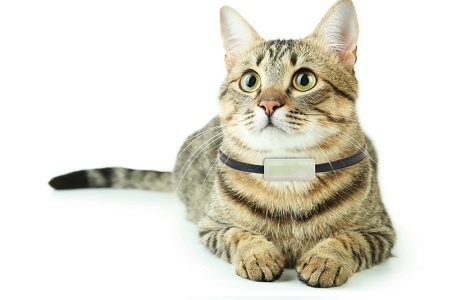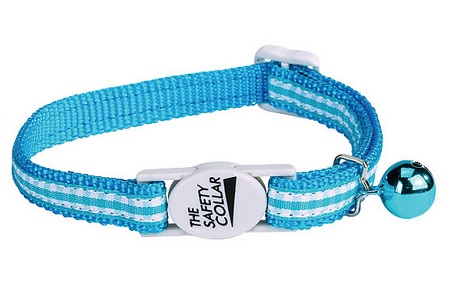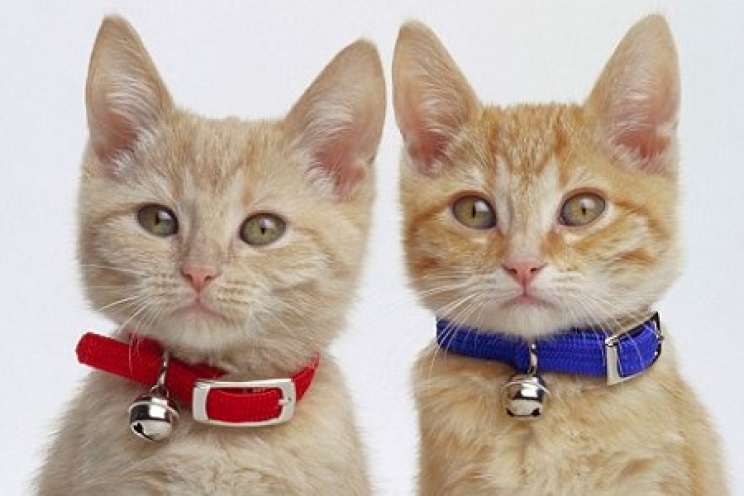The collar is an extremely important accessory for our dogs, because they could run away during the daily walk or simply because we need them to hook the leash. It is common, however, to find some cats with a collar, perhaps with a nice bell to complete the picture. Nevertheless, is it really necessary? Which model could be more suitable for them?
Collars? Yes

The collar is an excellent tool to recognize a stray animal at first sight from an owned one. This discussion is even more important if we consider that, whilst dogs have a mandatory microchip, this option is still optional for cats. If we see a cat with a collar, he will already have an owner who allows him to wander nearby the house, but he may also have been lost or abandoned.
It is unlikely that a cat will get close to strangers, but if he is used to living at home, we may have a few more chances of being able to observe him closely. In this way, it will be easier to take some photos or to identify some particular distinctive signs, in order to spread a lost announcement.
Some owners also apply identification tags to the collar, indicating the cat's name and owners telephone number. This strategy will be a valuable aid in case of loss.
Collar? No
An important issue that must absolutely be taken into consideration when talking about collars is safety. Unlike dog friends, cats are very agile and tend to climb and jump all over the place. In addition, their small size helps them slip into even very small hiding places. This factor is not very influential if we are talking about a cat who lives in the house. The issue is significantly complicated for cats who live in the garden or who have the opportunity to go out.
Let's think, for example, of an outdoors cat which is near a beautiful tree. The first thing he will do, most likely, is to climb at high speed until he reaches the highest point, in order to dominate the whole landscape, safe from dogs and other animals. Unfortunately, we often hear of cases where the collar gets caught in the thinner branches, blocking the cat's movement or, worse still, leaving it hanging by the neck. Extreme case, but that could very well be avoided by choosing a collar with the most suitable characteristics.
A gigantic "no" for the bells, rattles and other noisy accessories applicable to the collar. The incessant rattling stuns and irritates the cat - remember that animals hear sounds with a much higher pitch than us - and makes them more exposed to attack by dogs and other animals. Thanks to their agility, cats know how to hide from predators. However, if we make every movement perceptible to the hearing, we will halve its chances of not being tracked down.
The best option
On the market there are collars of different models, materials, patterns and colours. Regardless of any aesthetic purpose - we let ourselves be guided by our personal tastes – we should always look for a stretch or semi-stretch model, which can adapt to the cat's movements and, in unfortunate cases, can help the animal to free itself from the grip.
The double buckle models exercise the same function. One is the classic one, which is used simply to tie or untie the collar. In addition, they also have a small accessory buckle that opens when strong traction occurs, for example if the collar gets caught on a branch or a net.

These two tricks can really make a difference in case of danger, saving the cat's life.
The best material, on the other hand, must be soft and comfortable, without creating irritation on the cat's skin. Nylon remains the most suitable choice, although we will probably need to replace it more often, because it is more sensitive to his "claws".
As for the medal, we can choose between different types, from the classic one, hanging on the collar buckle, to the metal plate attached along the edge. A very interesting alternative is the "bottle", a very small cylinder that is attached to the collar buckle which you can insert a ticket with your data inside. For the more technological owners, we also find the innovative medals with QR code; just bring your smartphone close to the collar, open one of the apps that can read these codes and an internet page will open with all the data relating to our cat.
In this regard, if our four-legged friend suffers from particular health problems, such as diabetes, drug allergies and dangerous infections (such as IVF and FeLV) it is essential to apply a medal that can provide comprehensive information to the veterinarian or to whoever finds the cat. So we agree that "bottles" and QR code are the best option.
In essence, the cat collar becomes useful if we are talking about an animal used to going out in the garden and on the streets, especially if it tends to go away even for a long time or for long distances. On the contrary, a cat who lives in the apartment, without any possibility of going outside, will have no real need to wear a collar, if pure aesthetic use is excluded










